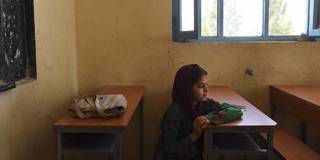In setting global targets for closing the gender gap and achieving universal education by 2030, governments and development advocates tend to focus on the need to build more schools and increase enrollment rates for women and girls. But while these objectives cannot be ignored, Afghanistan's experience shows why they are not enough.
KUALA LUMPUR – Despite frequent calls for action to provide universal primary education and eliminate gender disparities, few developing countries have made much progress toward these goals. For example, although South Asia made substantial progress toward achieving gender parity during the era of the Millennium Development Goals (2000-2015), the region still has the second-highest number of out-of-school children in the world, and lags behind international standards on several key indicators.
Girls account for the majority of the region’s ten million children who are not receiving formal education, owing to a lack of schools, poverty, the threat of violence, and social customs. Progress has been especially slow in countries like Pakistan and Afghanistan, where patriarchal values and traditional cultural norms militate against girls’ education.
In Afghanistan, women’s status declined sharply under Taliban rule between 1996 and 2001. Public education for girls was banned, and many government-run girls’ schools were converted into male-only institutions. Gross female enrollment fell from 32% to just 6.4% by 2001, by which time as many as 1.5 million children had been barred from school. The literacy rate for Afghan women fell to as low as 3% in rural districts. With little opportunity to acquire skills, thousands of young girls were forced into early marriage.

KUALA LUMPUR – Despite frequent calls for action to provide universal primary education and eliminate gender disparities, few developing countries have made much progress toward these goals. For example, although South Asia made substantial progress toward achieving gender parity during the era of the Millennium Development Goals (2000-2015), the region still has the second-highest number of out-of-school children in the world, and lags behind international standards on several key indicators.
Girls account for the majority of the region’s ten million children who are not receiving formal education, owing to a lack of schools, poverty, the threat of violence, and social customs. Progress has been especially slow in countries like Pakistan and Afghanistan, where patriarchal values and traditional cultural norms militate against girls’ education.
In Afghanistan, women’s status declined sharply under Taliban rule between 1996 and 2001. Public education for girls was banned, and many government-run girls’ schools were converted into male-only institutions. Gross female enrollment fell from 32% to just 6.4% by 2001, by which time as many as 1.5 million children had been barred from school. The literacy rate for Afghan women fell to as low as 3% in rural districts. With little opportunity to acquire skills, thousands of young girls were forced into early marriage.